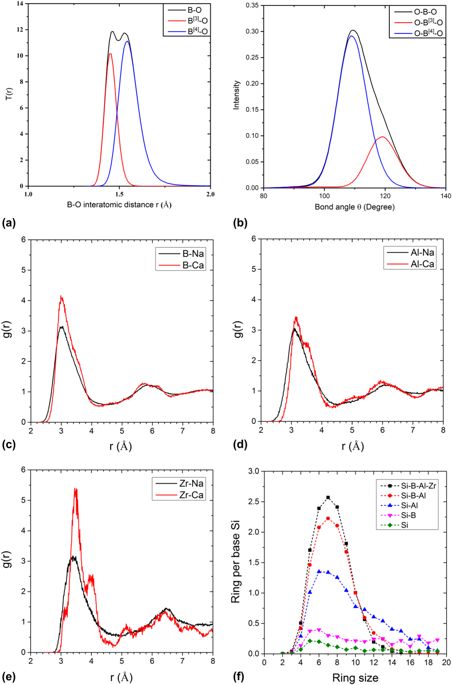npj Materials Degradation ( IF 6.6 ) Pub Date : 2018-02-05 , DOI: 10.1038/s41529-017-0025-y Marie Collin , Maxime Fournier , Pierre Frugier , Thibault Charpentier , Mélanie Moskura , Lu Deng , Mengguo Ren , Jincheng Du , Stéphane Gin

|
Knowing the structure of a material is necessary to understand its evolution under various influences; here, the alteration by water of a reference glass of nuclear interest, called International Simple Glass (ISG), is studied. The ISG atomic structure has not yet been thoroughly characterized. Short- and medium-range order in this six-oxide glass was investigated by molecular dynamics (MD) methods. Combining the simulated data with experimental observations acquired from both pristine and altered ISG provided new insight into the formation of surface layers and passivation of the underlying glass. In the tested conditions of 90 °C, silica-saturated solution, and pH90°C 7, the passivating layer partly inherits the structure of the pristine glass network despite the release of mobile elements (Na, B, and some Ca), with a reorganization of the silicate network following B release. The layer appears to minimize its internal energy by relaxing strain accumulated during glass quenching. The resulting passivated glass shows a strong resistance to hydrolysis. The nanopores of this hydrated material, displaying a mean pore size of ∼1 nm, are filled with various water species. Water speciation determination inside the nanopores is therefore an achievement for future water dynamic study in the passivated glass.
中文翻译:

国际简易玻璃的结构和在环境pH值条件下形成的钝化层的性能
了解材料的结构对于了解在各种影响下的演化是必不可少的。在这里,研究了被称为国际简单玻璃(ISG)的核参考玻璃的水蚀变化。ISG原子结构尚未完全表征。通过分子动力学(MD)方法研究了这种六氧化物玻璃的短程和中程有序。将模拟数据与从原始和更改后的ISG中获得的实验观察结果相结合,可以提供对表面层形成和底层玻璃钝化的新见解。在90°C,二氧化硅饱和溶液和pH 90°C的测试条件下如图7所示,钝化层尽管释放了可移动元素(Na,B和一些Ca),但部分地继承了原始玻璃网络的结构,并且在释放B之后硅酸盐网络重新组织。通过缓和玻璃淬火过程中积累的应变,该层似乎将其内部能量降至最低。所得的钝化玻璃显示出很强的抗水解性。这种水合材料的纳米孔显示出约1 nm的平均孔径,充满了各种水。因此,确定纳米孔内部的水形态是未来在钝化玻璃中进行水动力学研究的一项成就。










































 京公网安备 11010802027423号
京公网安备 11010802027423号